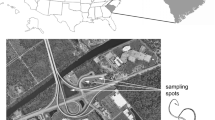Abstract
The madreporite of brittle stars is poorly studied, and the features of its structure are rarely used in the taxonomy. However, it is known that there is diversity in the madreporite structure. But are the ophiuroid madreporites phylogenetically informative? To check this hypothesis, we investigated the structure of the madreporite of 33 species of brittle stars from 4 families of Euryalida and 12 families of Ophiurida. The fixed specimens were processed with sodium hypochlorite using the standard procedure and then studied using SEM. If we combine our results with the modern phylogenetic data about brittle stars (O’Hara et al. in Curr Biol 24(16):1874–1879, 2014), we will find wide morphological diversity of the madreporites present in each of the three clades of Ophiuroidea. The madreporites with numerous pores, the well-developed oral shields in other interradii instead of irregularly arranged plates and the multiple madreporites occur in the representatives of all three clades. Only in Euryalida, which belongs to the clade A as well as the sister clade Ophiuridae + Ophiomusium, the definite oral shields are absent in all interradii except CD. Whereas in the family Ophiuridae (as in the clades B and C), the oral interradial shields are regularly formed. Contrary to this, the multiple madreporites and numerous madreporic pores appear to have evolved several times in different clades. Hence, the hypothesis that madreporite morphology is phylogenetically informative must be rejected since madreporites are highly homoplasious.











Similar content being viewed by others
References
Cuénot L (1888) Études anatomiques et morphologiques sur les ophiures. Arch Zool Exp Gén 2(6):33–82
Cuénot L (1948) Anatomie, éthologie et systématique des Échinodermes. In: Grassé PP (ed) Traité de Zoologie, vol 11. Masson et C-ie, Paris, pp 1–275
Dyakonov AM (1954) Ophiurans of the seas of USSR. Opredeliteli po faune SSSR, vol 55. Zoological Institute, Moskva—Leningrad, 136 p (in Russian)
Ezhova OV, Lavrova EA, Malakhov VV (2014) The morphology of the axial complex and associated structures in Asterozoa (Asteroidea, Echinoidea, Ophiuroidea). Russ J Mar Biol 40(3):153–164
Ezhova OV, Lavrova EA, Ershova NA, Malakhov VV (2015) Microscopic anatomy of the axial complex and associated structures in the brittle star Ophiura robusta Ayres, 1854 (Echinodermata, Ophiuroidea). Zoomorphology 134(2):247–258
Ferguson JC (1995) The structure and mode of function of the water vascular system of a brittlestar, Ophioderma appressum. Biol Bull 188:98–110
Hyman LH (1955) Echinodermata. In: Boell EJ (ed) The invertebrates. McGraw-Hill Book Company, New York, pp 310–313, 589–689
Ivanova-Kazas OM (1978) Comparative embryology of invertebrates: echinoderms and hemichordates. Nauka, Moscow, pp 29–42 (in Russian)
Ludwig H (1878) Trichaster elegans. Z Wiss Zool 31:59–67
Martynov AV (2010) Reassessment of the classification of the Ophiuroidea (Echinodermata), based on morphological characters. I. General character evaluation and delineation of the families Ophiomyxidae and Ophiacanthidae. Zootaxa 2697:1–154
Mortensen T (1927) Handbook of the Echinoderms of the British Isles, vol 9. Oxford University Press, London, p 471
O’Hara TD, Hugall AF, Thuy B, Moussalli A (2014) Phylogenomic resolution of the class Ophiuroidea unlocks a global microfossil record. Curr Biol 24(16):1874–1879
Reichensperger A (1908) Zur Kenntnis der Genus Ophiopsila. Z Wiss Zool 89:173–192
Smith AB, Paterson GLJ, Lafay B (1995) Ophiuroid phylogeny and higher taxonomy: morphological, molecular and palaeontological perspectives. Zool J Linn Soc 114:213–243
Stewart B (2000) Anatomical features of the euryalid snake star Astrobrachion constrictum (Ophiuroidea: Asteroschematidae). Invertebr Biol 119(2):222–233
Thuy B, Stöhr S (2011) Lateral arm plate morphology in brittle stars (Echinodermata: Ophiuroidea): new perspectives for ophiuroid micropalaeontology and classification. Zootaxa 3013:1–47
Thuy B, Kutscher M, Płachno BJ (2015) A new brittle star from the early Carboniferous of Poland and its implications on Paleozoic modern-type ophiuroid systematics. Acta Palaeontol Pol 60(4):923–929
Acknowledgments
The authors thank the Zoological Museum of the Moscow State University for the material, as well as the employees of the Laboratory of Electron Microscopy of Biological Faculty of Moscow State University. SEM study and specimens deposition were supported by grant from the Russian Science Foundation (No. 14-50-00029). Phylogenetic analysis was supported by grant from the Russian Foundation for Basic Research (No. 14-04-00366a).
Author information
Authors and Affiliations
Corresponding author
Ethics declarations
Conflict of interest
The authors declare that they have no competing financial or non-financial interests.
Additional information
Communicated by A. Schmidt-Rhaesa.
Rights and permissions
About this article
Cite this article
Ezhova, O.V., Malakhov, V.V. & Martynov, A.V. Madreporites of Ophiuroidea: are they phylogenetically informative?. Zoomorphology 135, 333–350 (2016). https://doi.org/10.1007/s00435-016-0315-x
Received:
Revised:
Accepted:
Published:
Issue Date:
DOI: https://doi.org/10.1007/s00435-016-0315-x




